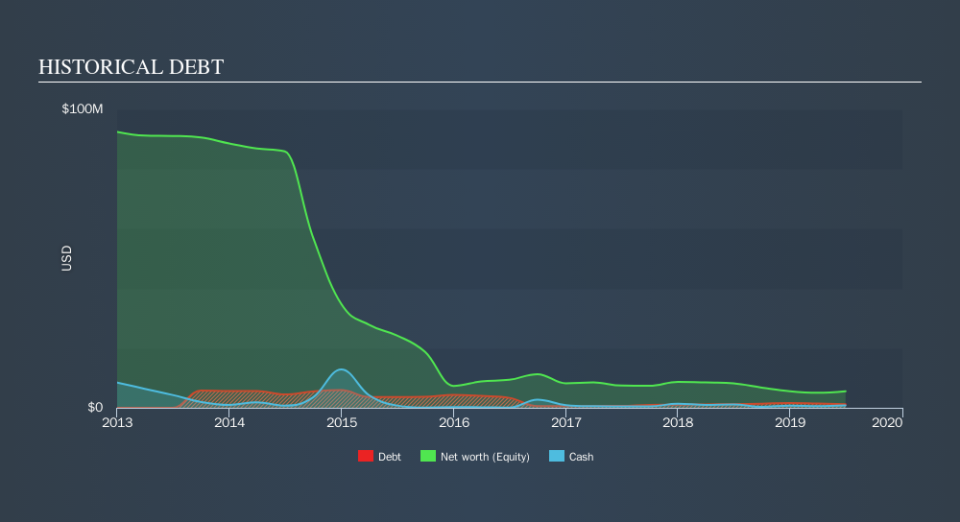Health Check: How Prudently Does Goldgroup Mining (TSE:GGA) Use Debt?

Legendary fund manager Li Lu (who Charlie Munger backed) once said, 'The biggest investment risk is not the volatility of prices, but whether you will suffer a permanent loss of capital. So it might be obvious that you need to consider debt, when you think about how risky any given stock is, because too much debt can sink a company. We can see that Goldgroup Mining Inc. (TSE:GGA) does use debt in its business. But should shareholders be worried about its use of debt?
When Is Debt A Problem?
Debt and other liabilities become risky for a business when it cannot easily fulfill those obligations, either with free cash flow or by raising capital at an attractive price. In the worst case scenario, a company can go bankrupt if it cannot pay its creditors. However, a more usual (but still expensive) situation is where a company must dilute shareholders at a cheap share price simply to get debt under control. By replacing dilution, though, debt can be an extremely good tool for businesses that need capital to invest in growth at high rates of return. The first step when considering a company's debt levels is to consider its cash and debt together.
See our latest analysis for Goldgroup Mining
What Is Goldgroup Mining's Debt?
As you can see below, Goldgroup Mining had US$1.18m of debt, at June 2019, which is about the same the year before. You can click the chart for greater detail. However, it does have US$821.0k in cash offsetting this, leading to net debt of about US$362.0k.
How Healthy Is Goldgroup Mining's Balance Sheet?
The latest balance sheet data shows that Goldgroup Mining had liabilities of US$7.38m due within a year, and liabilities of US$1.73m falling due after that. Offsetting this, it had US$821.0k in cash and US$543.0k in receivables that were due within 12 months. So it has liabilities totalling US$7.75m more than its cash and near-term receivables, combined.
This deficit casts a shadow over the US$4.17m company, like a colossus towering over mere mortals. So we definitely think shareholders need to watch this one closely. At the end of the day, Goldgroup Mining would probably need a major re-capitalization if its creditors were to demand repayment. The balance sheet is clearly the area to focus on when you are analysing debt. But you can't view debt in total isolation; since Goldgroup Mining will need earnings to service that debt. So if you're keen to discover more about its earnings, it might be worth checking out this graph of its long term earnings trend.
Over 12 months, Goldgroup Mining made a loss at the EBIT level, and saw its revenue drop to US$19m, which is a fall of 14%. That's not what we would hope to see.
Caveat Emptor
Not only did Goldgroup Mining's revenue slip over the last twelve months, but it also produced negative earnings before interest and tax (EBIT). Its EBIT loss was a whopping US$1.7m. When we look at that alongside the significant liabilities, we're not particularly confident about the company. It would need to improve its operations quickly for us to be interested in it. Not least because it had negative free cash flow of US$750k over the last twelve months. So suffice it to say we consider the stock to be risky. When we look at a riskier company, we like to check how their profits (or losses) are trending over time. Today, we're providing readers this interactive graph showing how Goldgroup Mining's profit, revenue, and operating cashflow have changed over the last few years.
If, after all that, you're more interested in a fast growing company with a rock-solid balance sheet, then check out our list of net cash growth stocks without delay.
We aim to bring you long-term focused research analysis driven by fundamental data. Note that our analysis may not factor in the latest price-sensitive company announcements or qualitative material.
If you spot an error that warrants correction, please contact the editor at editorial-team@simplywallst.com. This article by Simply Wall St is general in nature. It does not constitute a recommendation to buy or sell any stock, and does not take account of your objectives, or your financial situation. Simply Wall St has no position in the stocks mentioned. Thank you for reading.

